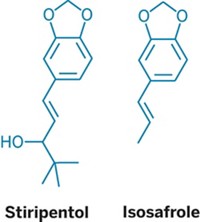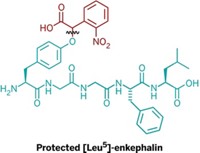Advertisement
Grab your lab coat. Let's get started
Welcome!
Welcome!
Create an account below to get 6 C&EN articles per month, receive newsletters and more - all free.
It seems this is your first time logging in online. Please enter the following information to continue.
As an ACS member you automatically get access to this site. All we need is few more details to create your reading experience.
Not you? Sign in with a different account.
Not you? Sign in with a different account.
ERROR 1
ERROR 1
ERROR 2
ERROR 2
ERROR 2
ERROR 2
ERROR 2
Password and Confirm password must match.
If you have an ACS member number, please enter it here so we can link this account to your membership. (optional)
ERROR 2
ACS values your privacy. By submitting your information, you are gaining access to C&EN and subscribing to our weekly newsletter. We use the information you provide to make your reading experience better, and we will never sell your data to third party members.
Biological Chemistry
Brain Self-Soothes With Inhibitory Protein
Researchers identify elusive molecule, diazepam binding inhibitor, which behaves like the antianxiety drug valium and regulates the brain’s electrical activity
by Lauren K. Wolf
June 3, 2013
| A version of this story appeared in
Volume 91, Issue 22
Ever since scientists learned in the 1970s that the anxiety medication Valium calms the brain by binding to specific protein receptors there, they’ve suspected the cognitive organ of making its own Valium-like compound to regulate nerve cell activity. More than 30 years later, John R. Huguenard of Stanford University School of Medicine and colleagues have pinpointed the naturally synthesized molecule (Neuron 2013, DOI: 10.1016/j.neuron.2013.04.026). Dubbed diazepam binding inhibitor (DBI), the small protein—or a peptide fragment thereof—sticks to the same receptor on nerve cells as does Valium, sending a signal to quiet the brain. The team confirmed that DBI causes Valium-like effects by measuring electrical activity in the neurons of mice engineered to lack the gene for DBI. These rodents had a higher risk of strong epileptic seizures than did normal mice. When the researchers added DBI back to a region of the brain called the thalamus, the mice became less prone to seizure. “Our brains are all capable of normal function and, with the wrong electrical stimulus, of seizures,” Huguenard says. The team thinks that when electrical activity in the brain’s thalamus gets too intense, nerve cells in that region secrete DBI to calm the ruckus and keep things working evenly.




Join the conversation
Contact the reporter
Submit a Letter to the Editor for publication
Engage with us on Twitter